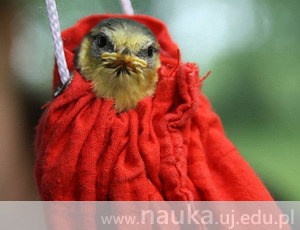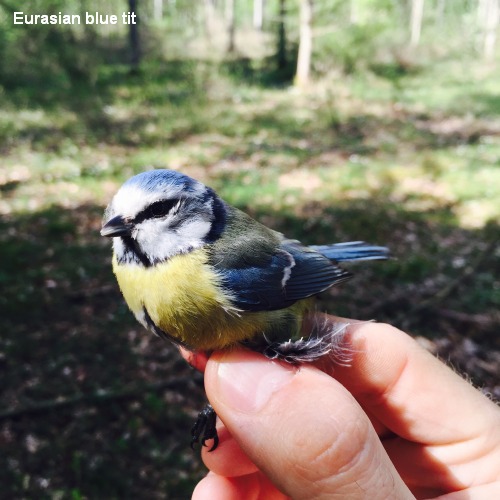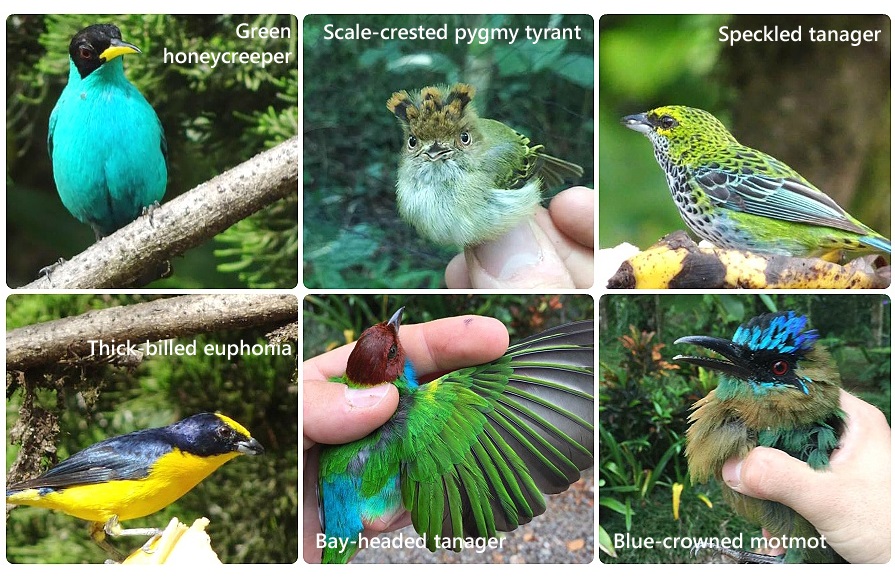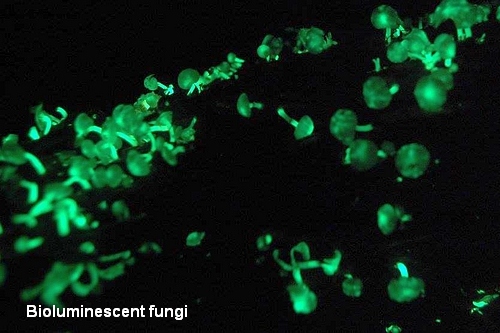
Gotland and Costa Rica lie a significant distance away from each other. They may have little in common, but it's in these two places that Dr Szymon Drobniak from the Jagiellonian University Institute of Environmental Sciences chose to conduct his research this year. We asked him to tell us a little bit about his experiences and share the photographs from his journeys. Read on for a fascinating peek into the colourful world of birds.
The cold North
Blåmes is the Swedish name for the Eurasian blue tit (Cyanistes caeruleus). This small passerine bird is the subject of a study conducted by the Jagiellonian University on the Swedish island of Gotland. The island itself is located about 200 kilometres from the mainland. For over 30 years, it's been a place of fascinating research and observations, attracting dozens of people: scientists, students, and amateur ornithologists alike. Thanks to almost 3,000 nest boxes, we are able to gather unique information about the biology and ecology of birds.
 The nest boxes in Gotland are distributed over an area of approximately 50 square kilometres. Starting mid-April, all boxes are regularly checked to see if they are occupied, and if so, by what kind of bird. After discovering that a box has been taken by a pair of our little blue birds, researchers begin to closely observe the nest during all stages of the baby birds' life, from hatching to leaving. Each year, the scientists also conduct several thematic studies devoted to various aspects of the Eurasian blue tits' biology and ecology.
The nest boxes in Gotland are distributed over an area of approximately 50 square kilometres. Starting mid-April, all boxes are regularly checked to see if they are occupied, and if so, by what kind of bird. After discovering that a box has been taken by a pair of our little blue birds, researchers begin to closely observe the nest during all stages of the baby birds' life, from hatching to leaving. Each year, the scientists also conduct several thematic studies devoted to various aspects of the Eurasian blue tits' biology and ecology.
The research on Gotland was started in the 1980s by a group of scientists from the University of Uppsala. Currently, their successors are working on a project concerning collared flycatchers (Ficedula albicollis). In the mid-1990s, the Swedish ornithologists were joined by researchers from France, who began to study the biology and behaviour of great tits (Parus major). Finally, the Polish team joined them in the late 1990s. Their research continues to this day, and so far it has resulted in a unique database of European blue tits' reproductive behaviour.
Every year, the researchers carefully study the goings-on in the nest boxes. They know each bird since it was a hatchling, and they also know its parents (thanks to bird ringing). Furthermore, they take blood samples from each specimen to observe the spread of its genes in the population (a process that's completely harmless to the bird).
The JU research team is trying to answer three main questions:
- Why do females choose certain males over the others?
- What is the purpose of colourful feathers?
- How does global climate change affect the birds' reproductive cycle?
Thanks to the studies conducted in Gotland, they managed to find out that the female's choice of a male is mostly affected by the environment in which the birds are living. They also discovered that it's not only the males, but also the females that communicate through the colourfulness of their feathers (most likely, they show off the quality of their genetic material and their health). It seems, then, that choosing a sexual partner is a two-sided process.
Video: Female Eurasian blue tit displays its defensive behaviour: according to some scientists, when threatened, the bird will try to imitate the sound of an attacking snake.
Interior design 101
The weather during the last year's breeding season was outstandingly favourable. Unsurprisingly, the birds went absolutely crazy: the JU ornithologists counted nearly 300 nests, one hundred more than in the previous season. The birds tried to hatch eight or nine eggs at once, desperately attempting to keep up with the unexpected onset of spring to make it in time before delicious caterpillars start appearing on young oak leaves.
Tits form the base of their nests from large quantities of moss. Great tits line their nests with hair, fur and (sometimes) synthetic fibres. Blue tits prefer to use dry grass and feathers. It may seem that these are very simple building materials, but our little blue birds have quite a flair for extravagant interior design, as they often add green plants into the mix, mostly aromatic ones. If there's an herb garden close by, you are sure to find basil, lavender, thyme, or mint in the nests of these birds. They probably do it to keep pests such as mosquitoes and fleas away. As you can see, in this respect, they're no different from us.
Below are some examples of the tits' creativity when it comes to nest construction. Aren't they cosy?

Sometimes, nature acquaints its creatures with strange bedfellows. During one of the breeding seasons, a colony of bumblebees have established a hive underneath a Eurasian blue tit nest. Although the animals coexisted peacefully, the scientists observed something peculiar: the substances collected by the bumblebees, probably derivatives of pollen or nectar, caused the hatchlings to become dazed, just as if they were inebriated. Well, that's Gotland for you.
 When baby birds hatch, caring for them becomes much harder for their parents. The nestlings are constantly crying for food and instinctively open their beaks at faintest sound from the above. The strongest ones are the loudest, hence they receive the most food and are the fastest to grow. The brightly coloured interior of their beaks tells their parents where they should put food. In the first days of their lives, they are "blind factories" turning nutrients into mass. When the birds hatch, they weigh around 0.8 to 0.9 grams, but in just two days, they double their weight, reaching about 2 grams. They are also the perfect example which shows that you are, in fact, what you eat. They're so tiny that each bit of food they ingest changes the very chemical structure of their bodies. Their basic source of nourishment are green caterpillars, which receive their colour from yellowish green carotenoids. Eating these morsels effectively turns the hatchlings green!
When baby birds hatch, caring for them becomes much harder for their parents. The nestlings are constantly crying for food and instinctively open their beaks at faintest sound from the above. The strongest ones are the loudest, hence they receive the most food and are the fastest to grow. The brightly coloured interior of their beaks tells their parents where they should put food. In the first days of their lives, they are "blind factories" turning nutrients into mass. When the birds hatch, they weigh around 0.8 to 0.9 grams, but in just two days, they double their weight, reaching about 2 grams. They are also the perfect example which shows that you are, in fact, what you eat. They're so tiny that each bit of food they ingest changes the very chemical structure of their bodies. Their basic source of nourishment are green caterpillars, which receive their colour from yellowish green carotenoids. Eating these morsels effectively turns the hatchlings green!
The warm South
This year, the breeding season on Gotland ended early, just after 15th June. The researchers are already awaiting the next one. In the meantime, Dr Szymon Drobniak travelled to the exotic wilderness of Costa Rica to study the birds therein. The difference of environment was enormous – indeed, he had barely a week to rest and pack a set of appropriate clothes before he traded Gotland's deciduous forests for Costa Rica's tropical cloud forests. In June and July, he enrolled in the NAPIRE 2016 course (Native American & Pacific Islander Research Experience), managed by the Organization for Tropical Studies. During that time, he was able to visit amazing places in Costa Rica and Panama (many of which are outside the reach of an ordinary tourist) and study the most spectacular and extraordinary organisms on our planet.
The research conducted in Costa Rica was focused on colour. Tropical forests are places which make our temperate deciduous forests look drab and colourless. We do have some species of colourful birds in Europe, but we pale in comparison with the tropics. One of the most iconic types of tropical birds are the hummingbirds: small creatures feeding mostly on nectar and insects which spend most of their lives in flight. They are characterised by "prismatic" plumage, which means their feathers take different shades of green, blue and violet based on the angle at which light hits them.

Thanks to samples collected in Costa Rica, Dr Drobniak's bird colour world database was significantly enriched. It forms the basis of his new project, which aims to increase our knowledge about the evolutionary mechanisms which has led to such an advanced colour communication as seen in hummingbirds. Of course, it goes without question that they are not the only tropical species that boast fantastically colourful plumage. Others, such as tanagers, honeycreepers, and motmots, are equally marvellous. The feathers collected will be analysed under a microscope in an attempt to discover the reasons behind the intensity and vividness of their pigmentation.
 There's much more to Costa Rica than just birds, beautiful as they are. The place is a paradise for any biologist. During his travels, Dr Drobniak encountered several species of snakes (including venomous coral snakes and jararacas as well as an impressive boa constrictor, casually laying in a ditch near a road). Camera traps used by another research group provided unique pictures of wandering pumas and ocelots. However, it was the nightly trek into the jungle that put the icing on the cake. It turns out that the tropical forest is just as fascinating during the night as it is during the day. Dead trees were covered by bioluminescent fungi, and the banks of the largest river in the area, Java, were littered with myriads od flickering greenish lights, emitted by tiny larvae inhabiting its waters. It was truly a sight to behold.
There's much more to Costa Rica than just birds, beautiful as they are. The place is a paradise for any biologist. During his travels, Dr Drobniak encountered several species of snakes (including venomous coral snakes and jararacas as well as an impressive boa constrictor, casually laying in a ditch near a road). Camera traps used by another research group provided unique pictures of wandering pumas and ocelots. However, it was the nightly trek into the jungle that put the icing on the cake. It turns out that the tropical forest is just as fascinating during the night as it is during the day. Dead trees were covered by bioluminescent fungi, and the banks of the largest river in the area, Java, were littered with myriads od flickering greenish lights, emitted by tiny larvae inhabiting its waters. It was truly a sight to behold.
The NAPIRE project is a unique initiative. It brings together native inhabitants of North America and Pacific Islands along with other volunteers. This year, the members included Cherokees, Navajos, Palauans, Samoans, and Hawaiians. They were very keen on sharing their cultural heritage and learning more about the others. "Watching them learn and develop a passion for science was an incredible experience, even more so because most of them were very serious about their background and traditions", said Dr Drobniak.
Photographs and video by Dr Szymon Drobniak.
Original text: www.nauka.uj.edu.pl





